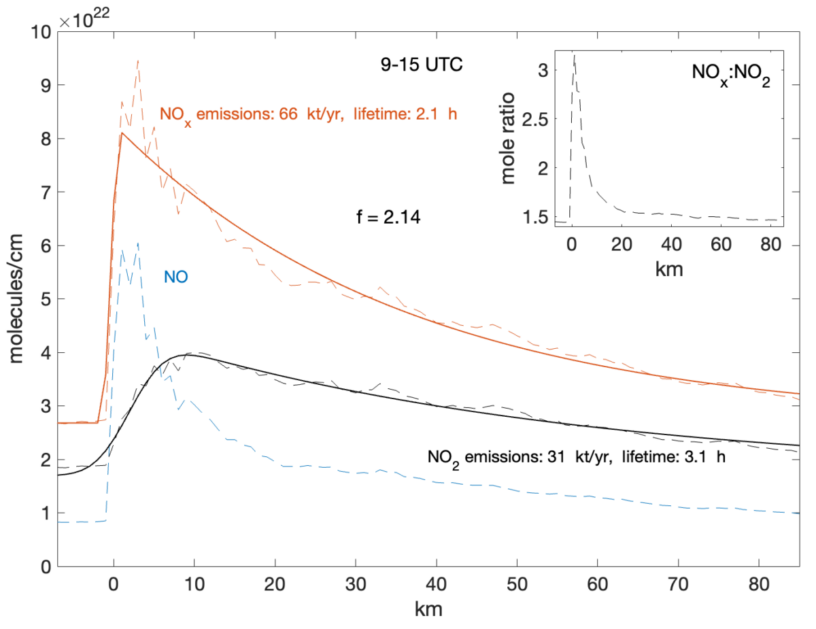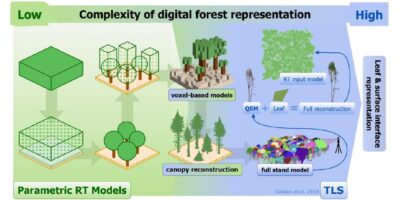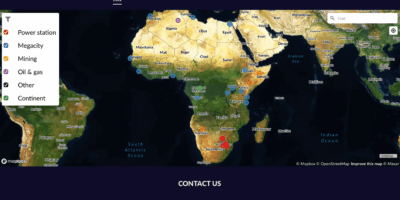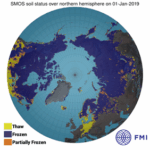New results in this recently published paper propose improved nitrogen dioxide (NO2) to nitrogen oxide (NOx) scaling factors for several data-driven methods that are used for the estimation of NOx power plant emissions from satellite observations of NO2. The results from this work led by the Finnish Meteorological Institute will be utilized in the data analysis from the upcoming Copernicus Carbon Dioxide Monitoring mission (CO2M), which targets to measure how much carbon dioxide is released into the atmosphere specifically through human activity. Finnish Meteorological Institute also participated to the EU H2020-program CoCO2-project, where a prototype anthropogenic CO2 emission estimation system was developed.
The scaling factors are deduced from high-resolution simulations of power plant plumes with the MicroHH large-eddy simulation model with a simplified chemistry and then applied to Sentinel-5 Precursor (S5P) TROPOspheric Monitoring Instrument (TROPOMI) NO2 satellite observations over the Matimba/Medupi power stations in South Africa.
The results show that due to the non-linear chemistry the optimal NO2 to NOx scaling factors depend on both the method employed and the specific segments of the plume from which emission estimate is derived. The scaling factors derived from the MicroHH simulations in this study are substantially (more than 50%) higher than the typical values used in the literature with actual NO2 observations. The results highlight the challenge in appropriately accounting for the conversion from NO2 to NOx when estimating point source emissions from satellite NO2 observations.
Highlights of the paper:
- NO2 to NOx scaling factors calculated from the MicroHH large-eddy simulations.
- Optimal scaling factors depend on the emission inversion method.
- Scaling factors applied to derive NOx emissions from S5P/TROPOMI NO2 observations.
- Optimal scaling factors are substantially higher than the values previously used.
More information
Janne Hakkarainen, Senior Scientist, janne.hakkarainen@fmi.fi
Reference
Janne Hakkarainen, Gerrit Kuhlmann, Erik Koene, Diego Santaren, Sandro Meier, Maarten C. Krol, Bart J.H. van Stratum, Iolanda Ialongo, Frédéric Chevallier, Johanna Tamminen, Dominik Brunner, Grégoire Broquet,: Analyzing nitrogen dioxide to nitrogen oxide scaling factors for data-driven satellite-based emission estimation methods: a case study of Matimba/Medupi power stations in South Africa, Atmospheric Pollution Research, Volume 15, Issue 7, https://doi.org/10.1016/j.apr.2024.102171, 2024.
Related publications
Janne Hakkarainen, Iolanda Ialongo, Erik Koene, Monika E. Szeląg, Johanna Tamminen, Gerrit Kuhlmann, Dominik Brunner: Analyzing Local Carbon Dioxide and Nitrogen Oxide Emissions From Space Using the Divergence Method: An Application to the Synthetic SMARTCARB Dataset, Frontiers in Remote Sensing, vol 3, https://doi.org/10.3389/frsen.2022.878731, 2022.
Kuhlmann, G., Koene, E. F. M., Meier, S., Santaren, D., Broquet, G., Chevallier, F., Hakkarainen, J., Nurmela, J., Amorós, L., Tamminen, J., and Brunner, D.: The ddeq Python library for point source quantification from remote sensing images (Version 1.0), Geoscientific Model Development, https://doi.org/10.5194/egusphere-2023-2936, 2024.
Santaren, D., Hakkarainen, J., Kuhlmann, G., Koene, E., Chevallier, F., Ialongo, I., Lindqvist, H., Nurmela, J., Tamminen, J., Amoros, L., Brunner, D., and Broquet, G.: Benchmarking data-driven inversion methods for the estimation of local CO2 emissions from XCO2 and NO2 satellite images, Atmos. Meas. Tech. Discuss., https://doi.org/10.5194/amt-2023-241, 2024.








Leave a Reply
You must be logged in to post a comment.